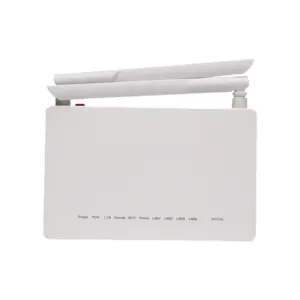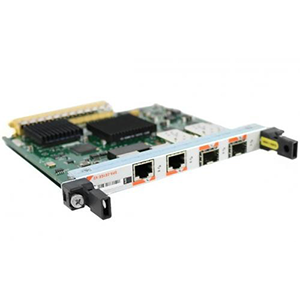As someone who is interested in high-speed data transmission and optical module technology, I am very excited to introduce you to the 10GBASE-SR optical module. The 10GBASE-SR optical module is an optical module that supports 10Gbps data transmission and is suitable for medium and short distance transmission and common LAN applications. In this article, I will introduce you to its working principle, features and advantages, as well as its wide application in data center networks and enterprise LANs.
Introduction to 10GBASE-SR optical module
-
Definition and basic principles of 10GBASE-SR optical module:
10GBASE-SR is an optical module used to support the 10Gbps data transmission rate of Ethernet. SR stands for Short Reach Multimode Fiber, which means it is suitable for short-distance multimode fiber transmission.
The basic working principle of the 10GBASE-SR optical module is to convert electrical signals into optical signals, then transmit the optical signals through optical fibers, and finally reconvert the optical signals into electrical signals at the target device. It uses a vertical cavity surface emitting laser (VCSEL) as a light source to emit optical signals, and a photodiode (PD) to receive optical signals. Optical modules also contain modems and electronic chips that are used to modulate and demodulate the conversion between electrical and optical signals.
Standard specifications for 10GBASE-SR optical modules:
The 10GBASE-SR optical module complies with the IEEE 802.3ae standard, which specifies the physical layer specifications of 10Gbps Ethernet. The following are some of the main standard specifications related to 10GBASE-SR optical modules:
-
IEEE 802.3ae: This is the standard for the 10G Ethernet physical layer specification, which defines various physical media and interface types for 10Gbps data transmission, including 10GBASE-SR, 10GBASE-LR, 10GBASE-ER, etc. Among them, 10GBASE-SR is used for short-distance multi-mode optical fiber transmission.
-
Optical module multi-source agreement (MSA): This agreement defines the mechanical dimensions, optical and electrical interfaces, electrical interfaces and specifications of optical modules to ensure compatibility and interoperability. 10GBASE-SR optical modules need to comply with MSA specifications to ensure compatibility with equipment from different vendors.
-
OM3 and OM4 standards: These are standards for multimode optical fiber, which specify the transmission characteristics and bandwidth of optical fiber. OM3 and OM4 multimode optical fibers support the short-distance transmission requirements of 10GBASE-SR optical modules.
-
Features and advantages of 10GBASE-SR optical module
-
Multi-mode optical fiber support: 10GBASE-SR optical module is suitable for multi-mode optical fiber transmission, and it can be used with common multi-mode optical fiber types (such as OM3 and OM4). Multimode fiber has a larger core diameter and can accommodate multiple light modes, making it suitable for short to medium distance transmission and common LAN applications.
-
Transmission distance and bandwidth: The transmission distance range supported by the 10GBASE-SR optical module is generally a few hundred meters to several thousand meters. The specific transmission distance is affected by factors such as the type of multimode fiber, the power of the light source, and the receiving sensitivity. In a typical data center environment, 10GBASE-SR optical modules can usually cover the distance inside and between cabinets.
The 10GBASE-SR optical module also provides high-bandwidth transmission capabilities and supports a data transmission rate of 10Gbps. This enables it to meet the requirements of high-density data transmission and fast application response, such as large-scale data centers, cloud computing environments, and high-performance computing.
-
High reliability and stability: The 10GBASE-SR optical module uses a vertical cavity surface emitting laser (VCSEL) as the light source, which has high stability and reliability. VCSEL technology is mature and low-cost, and can provide consistent performance and long-term stable optical signal transmission.
-
Hot-swappable function: The 10GBASE-SR optical module has a hot-swappable function and can be plugged, unplugged and replaced during operation. This makes network maintenance and equipment upgrades more convenient without interrupting network services.
Working principle of 10GBASE-SR optical module
The working principle of the 10GBASE-SR optical module involves two main components, the transmitter and the receiver, which together realize the transmission and reception of optical signals.
How the transmitter works:
The emitter part uses a vertical cavity surface emitting laser (VCSEL) as the light source. The working process of the transmitter is as follows:
- Electrical signal input: The input electrical signal passes through the modem chip and is converted into a modulated current of an optical signal.
- Optical signal emission: modulate the current through the VCSEL to stimulate the VCSEL to emit laser. The laser beam emitted by the VCSEL is focused into a narrow beam and transmitted through optical fiber.
- Optical fiber transmission: The laser beam enters the multi-mode fiber and is transmitted along the core of the fiber. Through multiple reflections, multiple light modes are formed inside the fiber.
Receiver working principle:
The receiver part uses a photodiode (PD) as a receiver of optical signals. The working process of the receiver is as follows:
- Optical fiber reception: The optical signal transmitted by multi-mode optical fiber reaches the receiver port.
- Photoelectric conversion: After the optical signal enters the receiver, it is received by the photodiode (PD), which converts the optical signal into a current signal.
- Electrical signal processing: The received current signal is amplified, filtered, and signal reshaped by the electronic chip to adapt it to subsequent digital signal processing.
Fiber optic types and connectors:
10GBASE-SR optical module is suitable for multi-mode optical fiber transmission. Common multi-mode optical fiber types include OM3 and OM4. OM3 fiber supports a transmission distance of up to 300 meters, and OM4 fiber supports a transmission distance of up to 400 meters. These multimode fibers have a larger core diameter and can transmit multiple light modes.
As for the connector type, the commonly used connector for 10GBASE-SR optical modules is the LC connector (Lucent connector). The LC connector is a miniaturized fiber optic connector with low insertion loss and high reliability. The LC connector adopts a simple push-pull design for easy installation and removal.
Application scenarios of 10GBASE-SR optical modules
10GBASE-SR optical modules are widely used in the following two main application scenarios:
-
Data center network:
In data center networks, 10GBASE-SR optical modules are widely used for high-speed connections between servers and interconnection of network equipment. The following are the application characteristics of 10GBASE-SR optical modules in data center networks: -
Server interconnection: 10GBASE-SR optical modules can be used to connect high-speed communications between servers to achieve fast data transmission within the data center. It supports high bandwidth requirements and meets the rapid exchange and processing of large-scale data in data centers.
-
Network equipment interconnection: 10GBASE-SR optical modules can be used to connect network switches, routers and other network equipment to build high-performance and scalable data center networks. It can provide high-speed interconnection to meet the needs of various network traffic in the data center.
-
Jumper connection: 10GBASE-SR optical module can also be used for jumper connection to directly connect servers and network equipment to network center equipment (such as core switches) to achieve high-speed, low-latency data transmission.
-
Enterprise LAN:
In enterprise LANs, 10GBASE-SR optical modules are used to meet high bandwidth requirements and fast data transmission requirements. The following are the application characteristics of 10GBASE-SR optical modules in enterprise LANs: -
High bandwidth requirements: As the amount of data in enterprise networks increases, the demand for high bandwidth is also increasing. The 10GBASE-SR optical module provides a data transmission rate of 10Gbps, which can meet the rapid transmission needs of large amounts of data in enterprise LANs.
-
Virtualization environment: In an enterprise’s virtualization environment, such as virtual servers and cloud computing platforms, high-speed network connections are required to support fast communication and data transmission between virtual machines. 10GBASE-SR optical modules provide sufficient bandwidth and low latency for high-density data transmission in these virtualized environments.
-
Telecommuting: With the popularity of telecommuting, enterprises need to provide high-speed and reliable data connections to remote workers. 10GBASE-SR optical modules can be used to connect remote offices and corporate headquarters, supporting high-bandwidth applications and fast data transmission for remote workers.
Deployment and configuration considerations of 10GBASE-SR optical modules
When deploying and configuring 10GBASE-SR optical modules, you need to consider the following compatibility requirements and optical fiber connection cabling:
Compatibility requirements:
-
Switch compatibility: Ensure that the selected 10GBASE-SR optical module is compatible with the switch used. Check the specifications of the switch and the specifications of the optical module to ensure that they support the same optical module type and fiber interface.
-
Server compatibility: If 10GBASE-SR optical modules are used for connections between servers, ensure that the server’s network interface card (NIC) or network adapter supports 10GBASE-SR optical modules. Check the specifications of the server and the optical module to ensure they are compatible.
-
Compatibility with other network devices: If connected to other network devices (such as routers, firewalls, etc.), ensure that the interfaces of these devices support 10GBASE-SR optical modules. Check the device specifications and the specifications of the optical module to ensure they are compatible.
Fiber optic connection and cabling requirements:
-
Optical fiber length: 10GBASE-SR optical module is suitable for short-distance optical fiber transmission. Generally, the maximum transmission distance is 300 meters (for OM3 multi-mode optical fiber) or 400 meters (for OM4 multi-mode optical fiber). When deploying, ensure that the length of the optical fiber does not exceed the specifications of the optical module to ensure signal quality and stability.
-
Connector type: 10GBASE-SR optical modules usually use LC connector (Lucent connector). Make sure the fiber and connector types you choose are compatible with the 10GBASE-SR optical module and that the connectors are of good quality to ensure reliable connection and signal transmission.
-
Fiber quality: Using high-quality fiber is the key to ensuring signal quality. Choose optical fiber that meets relevant standards, such as OM3 or OM4 multimode fiber, to ensure the best signal transmission performance. Additionally, ensure fiber optic cleaning and maintenance to avoid contamination or damage to fiber end faces.
-
Fiber optic cabling: When cabling, follow fiber optic best practices. Avoid excessive bending, excessive pulling force, or other conditions that may cause fiber damage or performance degradation. Use fiber protection sleeves or fiber management systems to protect the fiber and ensure good signal transmission.
Summarize:
The 10GBASE-SR optical module meets the requirements of short- and medium-distance transmission and high-bandwidth requirements through the support of multi-mode optical fiber. It has high transmission distance and bandwidth performance and plays an important role in data center networks and enterprise LANs. It is used for high-speed connections between servers and interconnection of network devices. When deploying and configuring, consider compatibility requirements with other network equipment, as well as fiber optic connectivity and cabling requirements.
With the further development of technology, 10GBASE-SR optical modules are expected to achieve higher transmission rates and lower power consumption, and may be replaced by emerging optical module technologies. We hope this article has provided you with valuable information about 10GBASE-SR optical modules and helped you better understand and apply this high-speed data transmission solution.
- What is a 10GBASE-SR SFP module?
- What is SR in optics?
- Is 10GBASE-SR copper or fiber?
- Is 10GBASE-SR single mode or multimode?
- What is SFP optical module?
- What is the difference between SFP-10G-LR and SFP-10G-SR?
- What are SFP-10G-SR used for?
- What is the difference between SFP and SFP module?
- What type of fiber is SFP-10G-SR?
- What are the characteristics of 10GBASE-SR?
- What type of connector is 10GBASE-SR?



